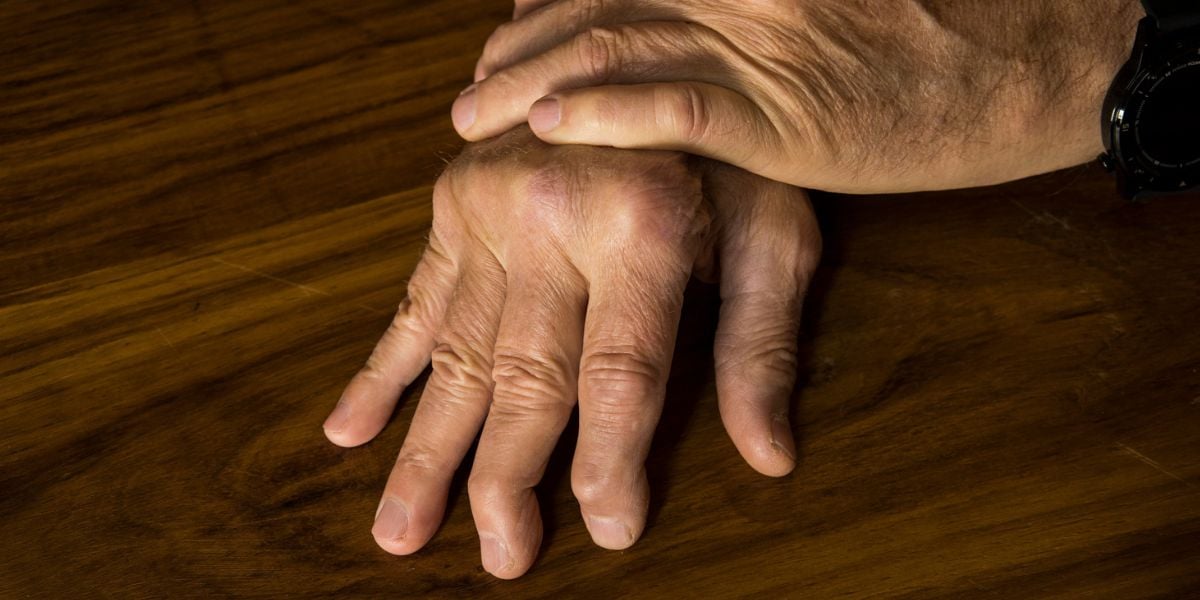Dupruyten’s contracture is a condition where the tissue beneath the surface of the hand and fingers begins to thicken and contract.
This occurs when the connective tissue in the palm thickens.
This can lead to small, hard lumps appearing beneath the skin, which are benign (non-cancerous), but can feel tender.
As the condition progresses, these lumps – also known as nodules – can extend into hard cords of tissue. These cords can contract and if they run along the fingers, can pull so they become bent towards the palm. It can therefore become difficult to extend the fingers.
It is sometimes referred to as Dupruyten’s disease as not every patient develops contractures.
Relationship with diabetes
Dupruyten’s contracture is thought to be associated with diabetes A number of studies have investigated this link, and while the percentage of prevalence differs between research, diabetes is unanimously seen to be a risk factor.
Alessandro Geraci et al observed that incidence of Dupruyten’s contracture was highest in older people that had diabetes for a longer time.
J.Noble et al, meanwhile, reported an overall incidence of Dupruyten’s contracture in patients with diabetes at 18 per cent. They also observed a distinct pattern that signs of Dupruyten’s contracture in diabetic patients were rare in the little finger and more common in the middle finger.
Research from PE Arkkila et al concluded that people with both type 1 and type 2 diabetes can be affected – but Dupruyten’s contracture occurs at a younger age in those with type 1.
While men are more likely to develop the condition, some research has shown that in patients with diabetes and Dupruyten’s contracture, prevalence is higher among women.
Symptoms of Dupruyten’s contracture
When the nodules contract and result in lumps beneath this skin, this can greatly affect movement of your hand.
Having bent fingers that will not extend is the primary symptom of Dupruyten’s contracture, as is the thickened skin that will appear.
One or both hands can be affected, including the thumb on some occasions, which can make everyday tasks like carrying shopping bags and shaking hands very difficult.
Causes of Dupruyten’s contracture
The precise cause is unknown, but genetics is thought to be factor of Dupruyten’s contracture, with research illustrating that it can run in families.
Additionally, the condition is often prevalent in people of northern European descent, further suggesting genes play a role.
Other possible factors that increase the risk of developing Dupruyten’s contracture include:
- Gender – Men are more likely to develop the condition
- Heavy drinking or smoking
- Seizure disorders – such as epilepsy
- Diabetes
How is Dupruyten’s contracture diagnosed?
You should see your GP if you think you have Dupruyten’s contracture, with characteristic signs including thickened skin, bent fingers and lumps of tissue.
Diagnosis will often come during a physical examination, in which the doctor will inspect your hands and check for toughened tissue lumps. Other tests are not often necessary, although scars on the palms from burns or a hand injury should be specified to your doctor in case of misdiagnosis.
If you cannot extend your fingers, you may be referred to a specialist for treatment.
Treatment for Dupruyten’s contracture
Treatment for Dupruyten’s contracture is dependent on the severity of the condition. In mild cases, where the condition progresses slowly and there is no pain, treatment may not be required.
However, in more severe cases, inflammation can be relieved with cortisone (steroid) injectio, while a needle fasciotomy may be recommended to puncture a cord that is pulling your finger towards the palm.
If you have diabetes, a steroid injection may affect your blood glucose control and would be discussed with your doctor before being administered.







